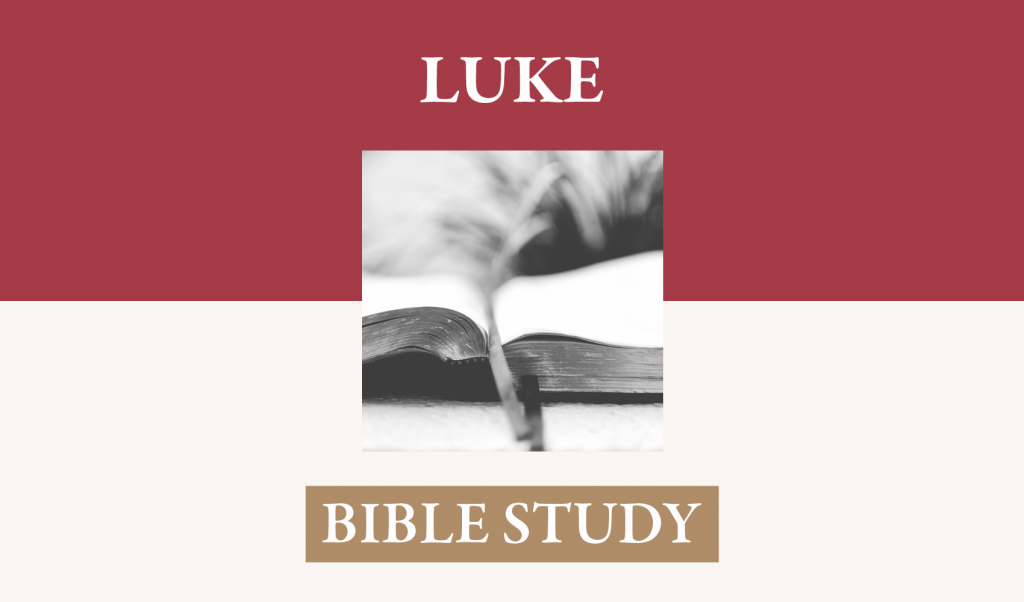I. The Completion of the Trial of Jesus – Luke 23:1-25
A. The Irrational Wickedness of the Accusers – They, the chief priests and scribes, put themselves into the guilty position by confessing that the Christ they looked for would forbid allegiance to Caesar. Jesus never claimed that his Messiahship consisted of any such thing but that they should give to Caesar what properly belonged to Caesar. They imposed their own misperception of what they Messiah would do on Jesus’ frank admission before the Council that he was the Messiah.
B. the Incompetence of the Judges – Pilate could discern that the charges were all false, but he had no compelling reason for the sake of pure justice to release Jesus. His question to Jesus, “What is truth” indicates that no sense of justice and truth beyond mere earthly usefulness governed his understanding of his position. That he judged himself as unfaithful when, as one whose power was given by God, he capitulated to the pressure of hatred and envy for the sake of immediate security of position, he did not consider. Herod, in showing contempt to Jesus, showed himself as the one thoroughly contemptible. The continued practice of abuse of power, murder, and prideful contempt of Herod as well as his grotesque end is recorded in Acts 12.
C. The Absurdity of the Verdict – Initially, even though Pilate said Jesus was innocent of any of the charges brought against him, he nevertheless said he would “punish and release him.” When that was seen as entirely unacceptable to the mob, “he delivered Jesus over to their will.” As for Herod, he clearly did not believe the charges, but was glad to have Jesus appear before him so he could witness some of the miracles that he had heard about Jesus doing. When Jesus failed to perform, he joined in a party of ridicule, mocking Jesus claim to infinite power [22:69] by having him arrayed in the garments of earthly royalty and mocking these claims.
II. The Company of the Crucifixion – 26-43
A. Simon of
B. The mourning crowd receives words of warning from the condemned Christ – 27-31 Matthew Henry comments. “When with an eye of faith we behold Christ crucified we ought to weep, not for him but for ourselves. We must not be affected with the death of Christ as with the death of a common person whose calamity we pity, or of a common friend whom we are likely to part with. The death of Chris was a thing peculiar; it was his victory and triumph over his enemies; it was our deliverance, and the purchase of eternal life for us. And therefore, let us weep, not for him but for our own sins, and the sins of our children, that were the cause of his death; and weep for fear (such were the tears here prescribed) of the miseries we shall bring upon ourselves, if we slight his love, and reject his grace, as the Jewish nation did, which brought upon them the ruin here foretold.” Perhaps we have to much emphasis on joy, when we have never realized how much we have to mourn. It is only to those that mourn that the promise of comforting comes. To his worldly-minded hearers James preached, “Be wretched and mourn and weep. Let your laughter be turned to mourning and your joy to gloom. Humble yourselves before the Lord, and he will exalt you.” James 4:9, 10
C.. Soldiers and Criminals – 32-43; – This scene is one of massive contrasts—divine mercy combined with the most insensitive kind of human harshness and crowd bullying, along with the astounding repentance and confession of one of the thieves.
Verse thirty-two gives the infinitely ironic setting, Jesus the righteous one set between two criminals, obviously guilty of punishable crimes even in the eyes of the world as well as their own eyes [40f] and Jesus declared by God Himself as His beloved Son, unconvicted even by pagan worldly rulers and declared by his most knowledgeable followers as having “committed no sin” [1 Peter 2:22] and as assuring all that “he is righteous” [1 John 2:29]
Jesus prays that his Father will forgive those that did these things, even as they cast lots to divide his garments. His death was taking place precisely that such spiritual malefactors would be forgiven as we see put on display immediately. His prayer for forgiveness was a further indication of the completeness of his self-emptying, for the request involved his taking to himself the suffering due to those that would be forgiven by virtue of his prayer and his death.
The taunt of the Jewish rulers presents another striking irony for in their destructive sarcasm, they probed the profound issue of salvation bound up in the death of Christ. H saved others” say they, and how true. “Let him save Himself,” they surmised, but missed the point that in saving others he could not save himself. According to Mark’s account, other were indeed, in their crudeness, saying “He saved other; he cannot save himself” a truth to which they were strangers, but by divine
One criminal joins the taunt with obvious personal interest invested, not wanting to complete the worst features of the slow death that now loomed over his guilty head. “Save yourself and us!” To the very last, he was hard and felt no spiritual remorse for his sins, but only rage at the idea that he must now suffer for having been apprehended in his crimes. Unopened eyes and hardened heart all the way to the end. In the confusion of all this roiling sarcasm and insult the clear light of truth struck the heart of one of the sinners on the scene; a thief confesses his worthiness of such a death and of his final accountability to God [40] and implores Jesus, not viewing him as a tragic figure or as a weakened and helpless imposter, but as a victorious savior and conqueror.
III. Jesus the High Priest presents Himself as a perfect sacrifice to satisfy divine Justice 44-49
A. 44 – As one considers the scene that ensues, the words of the great hymn writer Isaac Watts should certainly seem pertinent. “Well might the sun in darkness hide, and shut his glories in, when Christ the Mighty Maker died for man, the creature’s, sin.”
B. Jesus now has made the final sacrifice, no more types of such need be offered, no more high priest need enter the Holy of Holies, so through his broken body the veil of separation is torn. Jesus then enters before the Father Himself with his completed obedience having made the once-for-all sufficient sacrifice and presents it to the Father. He expressed this in the words of Psalm 31:5, “Father, into your hands I commit my spirit.” Hell has been overcome, an experience he expressed by taking the words of Psalm 22, “My God my God why hast thou forsaken me.” Jesus has now endured all the divine wrath necessary to render its fearsomeness without threat to the believer. Death would certainly be defeated for as Jesus’ human body perished and would soon be placed in a tomb, he committed his spirit (conscious of having overcome temptation and having endured the penalty of sin for all his people, his elect), to his Father. Soon it would be reunited with his body at the resurrection. As he had spoken through the prophets in the past, so now he takes to himself the essence of all the spiritual angst as well as assurance of those words as he fulfills all the things that were written about him, claims them as his own, and dies with Scripture in his mouth.
C. A soldier, a centurion, unacquainted with scripture or with the hope of
D. The crowd, “that had assembled for this spectacle,” that is, a form of entertainment had the soberness of it all descend upon them in these last moments and they returned home, beating their breast in recognition that a sorrowful thing had been done. There is no indication that this involved true repentance on their part, but that they had participated in an event that showed how desperately degraded they had become to find such events a matter of detached amusement.
E. His followers, who were soon to take any action they could that they thought would show respect and love, stood at a distance and observed all these things. [49] Their standing at a distance is not intended as a criticism, but as a mere statement of fact and a further testimony that the number of witnesses to the reality of his death was too many to doubt.
IV. Jesus Burial – The final evidence of the reality of his death.
A. We are introduced to Joseph of Arimathea – His actions and the testimony Luke provides shows that the judgment of the Sanhedrin was not unanimous, but that Joseph had not consented to their manner of holding the trail nor the decision they reached. In caring for Jesus after his death, Mark mentioned that he “took courage” and Matthew said that he was a “Disciple of Jesus.”
B. The Centurion verified that Jesus was dead {Mark] and Joseph organized the removal of Jesus’ body from the cross, perhaps did it personally, wrapped the body carefully in a linen shroud. He placed it in a tomb cut into a stone. This does not appear to be a natural cave but one cut particularly to be a tomb for the family of Joseph of Arimathea. The women observed how he was laid, and that he had rolled a stone against the entrance to the tomb.
C. A part of the gospel confession as stated by Paul in 1 Corinthians 15 includes “That he was buried.” The burial is important in confirming the reality of his humanity, the certainty of his death, the unmistakable reality that on the third day that very body no longer inhabited the place where it had been laid in death.
V. Testimonies of Observers
A. Pilate – “I find no guilt” 4
B. Pilate “I did not find this man guilty, . . . neither did Herod.” 14, 15
C. Pilate – “Nothing deserving death has been done by him.” 15
D. Pilate – “What evil has he done? I have found in him no guilt deserving death.”
Comment: Pilate obviously is unqualified to comment on the internal moral perfection and unblemished beauty of Jesus, but, as a man not prone to mercy or overzealous for fairness, his comment about the groundless nature of the charges brought against Jesus emphasizes both the hatred that the Jews had toward him and sets the pattern for the deeper truth that he died “the just for the unjust.”
E. Jesus – “If they do these things when the wood is green” In whatever application is given to the last portion of this comparison, it is clear that Christ is calling Himself the “green tree.” He is the one that is alive, and useful, and fruit-bearing and unlikely for burning. What then will become of the ones that are ripe for burning and for wrath? Jesus could be referring either to the wrath of the Jews, first against him, the Messiah, and then against his followers, who compared to him are indeed dry trees. He could refer to the upcoming of the wrath of the Roamsn in their attack on Jerusalem—if, without provocation, they carry through with such horrendous execution, what will the do when they are provoked by the Jewish rebellion that will lead to the destruction of the Temple and the ravaging of Jerusalem; but surely he also indicates that if he is to be given over to death, not only to the wrath of man, but to the wrath of the Father, what will become of those who do not take refuge in him, who bear their own sin and live with the love of evil and sin reigning in them.
F. The last application of these words takes on more significance when we see the testimony of the Thief. “Do you not fear God, since you are under the same sentence of condemnation? And we indeed justly, for we are receiving the due reward of our deeds; but this man has done nothing wrong.” Surely this thief recognized that Jesus was the “green tree” and both of them were “dry” and ready for burning. This confession was more than just a recognition that he was free of political or civil or social criminality, but that he was indeed an innocent and righteous man, indeed the Messiah that would inherit the
G. The Centurion – not only was a thief saved but a soldier also. Luke indicates this by prefacing the testimony “Certainly this man was innocent,” with the revealed observation, “He praised God, saying, . . .” See above for other observations on the testimony of the Centurion.
H. All of these testimonies are given in such a concentrated way to show that the death of Jesus came for a reason other than his own culpability. The more richly articulated doctrine of substitutionary atonement is grounded in this witness.















